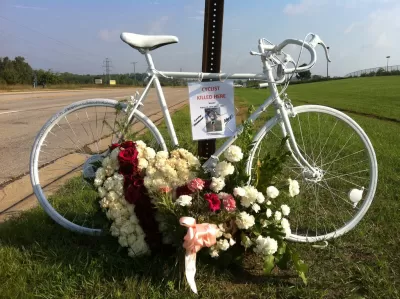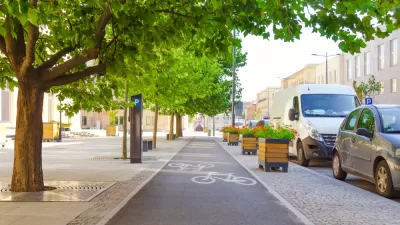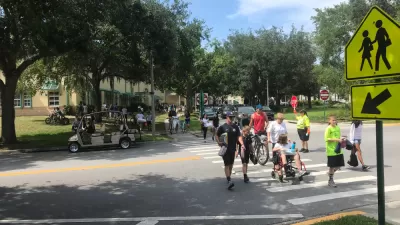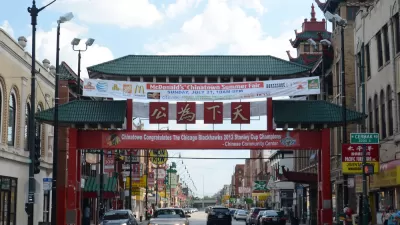What do traffic safety and gun violence have in common? A lot, as it turns out. In both cases, hard-hit neighborhoods tend to have suffered from historical disinvestment along racial lines.

Although gun violence and traffic safety might seem like unrelated ills, their severity tracks with "race, class, and place," Hanna Love and Jennifer S. Vey write. "The lower a metro area's median household income, the more dangerous its streets are for people walking. And similar trends persist for gun violence."
In urban areas, neighborhoods populated mostly by people of color tend to be poorer than white areas. That de facto segregation is of course no accident: it was once de jure. High rates of car and gun violence "stem from the same historical inequities in how our cities were designed and built, in which intentional decisions by planners and policymakers divided our nation's physical landscape along racial lines," Love and Vey write.
They argue that addressing both problems means acknowledging that for disadvantaged communities, making streets safer will require more than mere bike lanes. "For those who are vulnerable to victimization when engaging in everyday tasks—like walking to buy snacks or to work—concerns about safety impact nearly every aspect of their lives."
Love and Vey advocate better engagement with residents, asking them what they want from their streets and investing in safety strategies already being developed and led by those in the community.
FULL STORY: To build safe streets, we need to address racism in urban design

Trump Administration Could Effectively End Housing Voucher Program
Federal officials are eyeing major cuts to the Section 8 program that helps millions of low-income households pay rent.

Planetizen Federal Action Tracker
A weekly monitor of how Trump’s orders and actions are impacting planners and planning in America.

Ken Jennings Launches Transit Web Series
The Jeopardy champ wants you to ride public transit.

Washington Legislature Passes Rent Increase Cap
A bill that caps rent increases at 7 percent plus inflation is headed to the governor’s desk.

From Planning to Action: How LA County Is Rethinking Climate Resilience
Chief Sustainability Officer Rita Kampalath outlines the County’s shift from planning to implementation in its climate resilience efforts, emphasizing cross-departmental coordination, updated recovery strategies, and the need for flexible funding.

New Mexico Aging Department Commits to Helping Seniors Age ‘In Place’ and ‘Autonomously’ in New Draft Plan
As New Mexico’s population of seniors continues to grow, the state’s aging department is proposing expanded initiatives to help seniors maintain their autonomy while also supporting family caregivers.
Urban Design for Planners 1: Software Tools
This six-course series explores essential urban design concepts using open source software and equips planners with the tools they need to participate fully in the urban design process.
Planning for Universal Design
Learn the tools for implementing Universal Design in planning regulations.
Heyer Gruel & Associates PA
Ada County Highway District
Institute for Housing and Urban Development Studies (IHS)
City of Grandview
Harvard GSD Executive Education
Toledo-Lucas County Plan Commissions
Salt Lake City
NYU Wagner Graduate School of Public Service





























